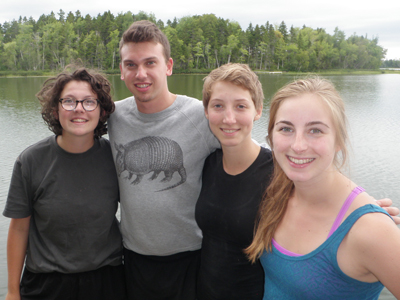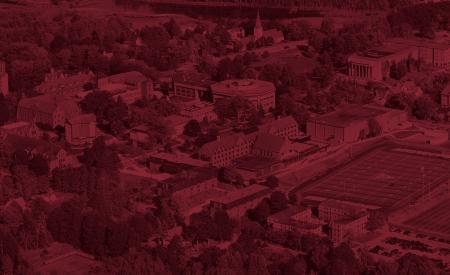5Q with honours environmental science, biology and geography student Paul MacKeigan
 1- What are you researching for your honours thesis?
1- What are you researching for your honours thesis?
I am studying three lakes in New Brunswick and how the concentrations of DDT in these lakes have influenced their zooplankton communities. The province and forestry companies sprayed DDT to control spruce budworm about 60 years ago. Dr. Josh Kurek and I are working closely with Dr. Karen Kidd from UNBSJ — her lab analyzes DDT from our historic sediment samples.
I want to know if the historic concentrations of DDT in lake sediments influence the zooplankton in these lakes. I am reconstructing their population through time and shifts related to DDT. I want to know what were the baseline community structures. Do we see an assemblage shift with greater DDT use? And have those systems recovered? Right now what I see is that lakes have not recovered. The data is very obvious.
2 - Why is this research important?
There are a couple of reasons why I think this research is important. First of all, lakes are an essential resource to this province culturally, economically, and as ecosystems. I see value in any study that contributes to monitoring and overall stewardship of freshwaters. New Brunswick ran one of the world’s largest insecticide spray programs. My research may provide useful data to understand the lasting effects of insecticide use and to better understand how chemical stressors influence lakes. Studying zooplankton is important due to their position in lake food webs. They form the intermediate trophic level, so changes in their populations may have an effect on other organisms.
3- How are you collecting information on past zooplankton populations?
When these organisms die they make their way down into the sediment of the lake. The sediment builds up over time and so we can go to the lake and collect a sediment core and determine the sediment's age. The bottom of the core would represent accumulation of zooplankton from long ago, whereas the top of the core represents modern conditions. We can then identify zooplankton remains to a species level. I literally count all the species at every sediment level from a core.
4- Can you describe the number of opportunities you have had to do research and present your work at Mount Allison?
I have been working with Dr. Kurek since after my second year, when I spent the whole summer in his lab as an aquatic biomonitoring assistant. Then I earned an independent student research grant to start my honours research. I really like it. It has been a lot of fun.
I have also been quite fortunate to go to several conferences with Dr. Kurek. In 2016, I presented my honours research at Queen’s, McGill, Atlantic Geographers Conference, and at Mount Allison’s Summer Undergraduate Research Fair. That has also been an awesome experience.
During an independent study, I worked on a dendrochronology project, studying red oak in Baie Verte, NB. Because it is close to the coast, we could see if such things as storm surges or saltwater intrusion had influenced tree growth. It was just for the first semester. I already wrote my final paper and the course is finished, but it was really cool so we are still working on it.
5- What extracurriculars are you involved in?
This year has been pretty busy with schoolwork, as I have my honours work and fourth-year courses, but I still play intramural sports. In the three years before that, I took part in the SMILE program, Habitat for Humanity, and the Student Refugee Program. I do SMILE part-time now. I experienced three years of intense extracurriculars, but this year I need to focus on schoolwork.
Bonus question: What are your plans for next year?
I am going to McGill to start my MSc in biology. The professor I am working with is part of an NSERC grant with 20 other scientists, the Canadian Lake Pulse Network. It is a huge pan-Canadian study on lake health.




